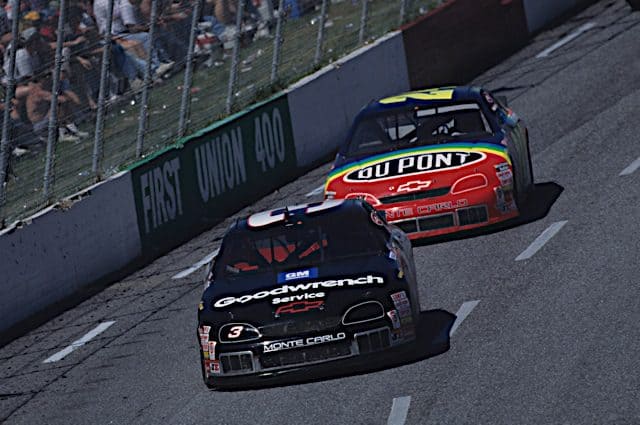It was the end.
Even as they gathered, one-by-one, until the crowd swelled into the tens of thousands, it was already over, or at least the ending was inevitable.
When the engines stopped their angry, restless roaring, the silence would be all-encompassing.
Still they gathered, staving off that moment for as long as they could and seeking kinship in the loss when they couldn’t make it last.
It wasn’t just the summer ending, though in late September, that too was already in the wind. This time, there was no promise of winter’s end giving way once again to the hue and cry that overtook the hollows and hills of Wilkes County, North Carolina. It was over.
NASCAR was beginning to ride a wave in 1996. The sport was growing in popularity. Track owners were seeing possibility in new markets, and they were thinking big.
Texas Motor Speedway, just outside of Dallas in Fort Worth, was a mile-and-a-half track, similar in shape to Charlotte Motor Speedway, with the newest and most up-to-date amenities and seats as far as the eye could see. The one-mile oval then named New Hampshire International Speedway was expanding; at peak capacity, it would hold 110,000, and every one of those seats was sold when the NASCAR Cup Series came calling.
North Wilkesboro was the oldest track on the Cup schedule, predating NASCAR itself by a year. There was only so much room — and so much money — to expand with NASCAR’s boom time. With only Route 421 bringing fans and teams alike to that slice of small-town America, traffic was a limiting factor even if the track could match the seating that the newer tracks had to offer.
Other tracks took notice. Bruton Smith, whose track empire included Charlotte Motor Speedway and the new, shiny Texas track, didn’t have a use for the track fondly dubbed “North Wilkes.” Neither did Bob Bahre, whose New Hampshire facility couldn’t keep up with demand for a single race. When they bought North Wilkesboro Speedway, they didn’t want the .625-mile oval that ran both uphill and downhill every lap. They only wanted its two race dates.
With one race moving to Texas in 1997 and the other headed to New Hampshire, North Wilkesboro would be the first track to fall by the wayside, even as NASCAR’s popularity skyrocketed.
And so they gathered, one last time, to race, to give an old friend a fitting sendoff, to say goodbye.
None of the 46 drivers who arrived at North Wilkes that weekend are active in…
Click Here to Read the Full Original Article at …

